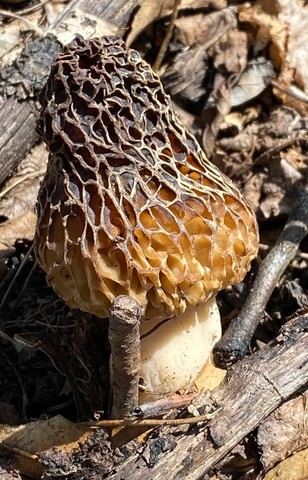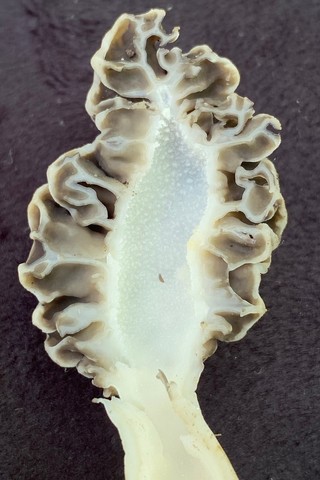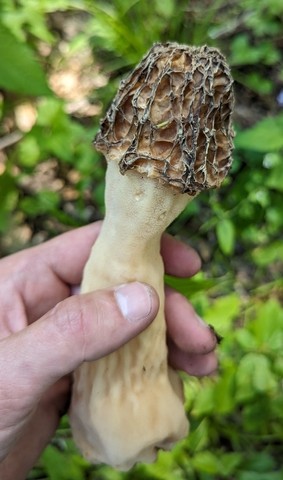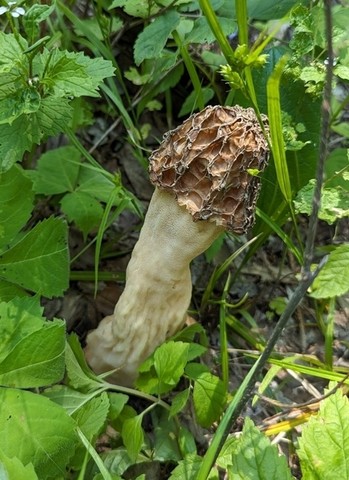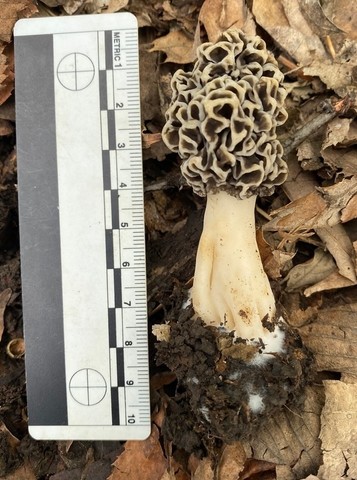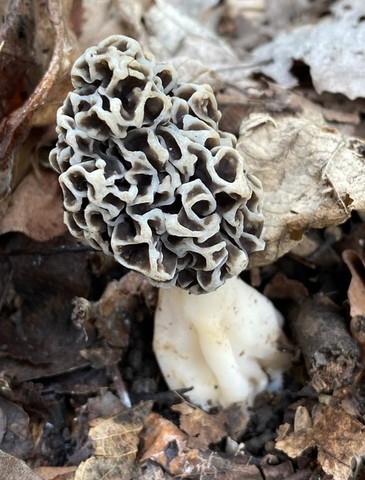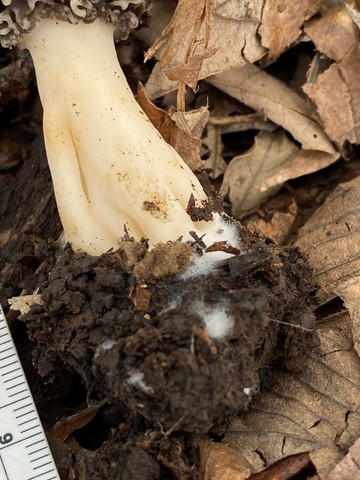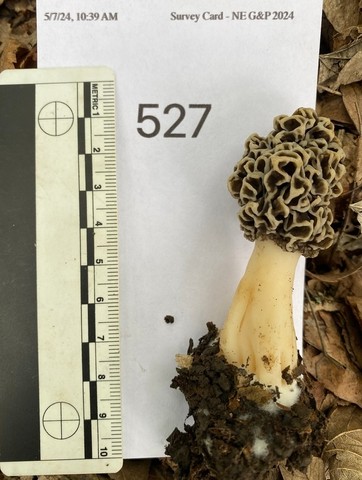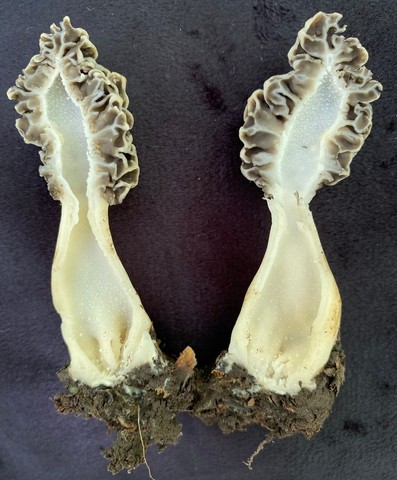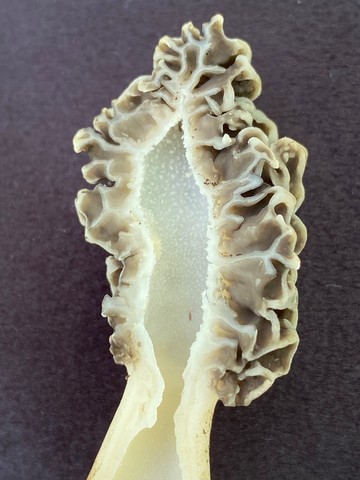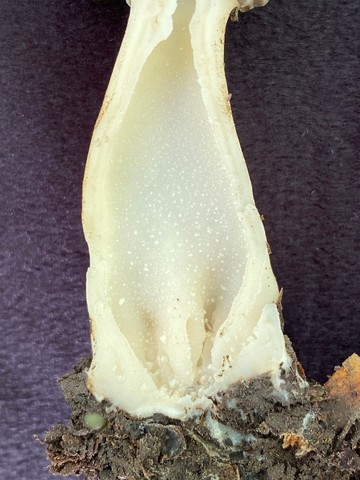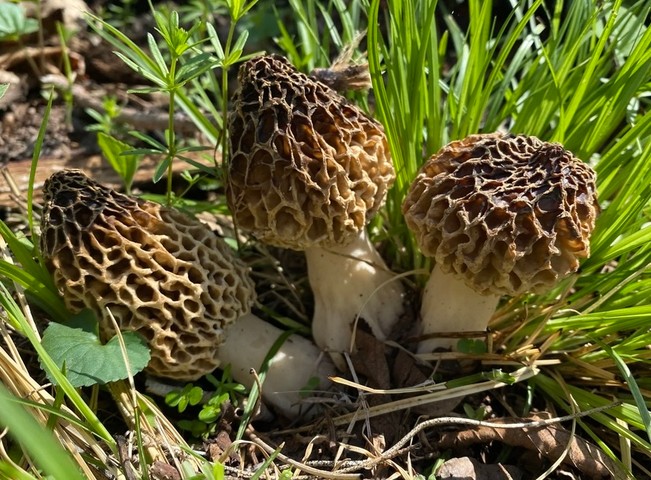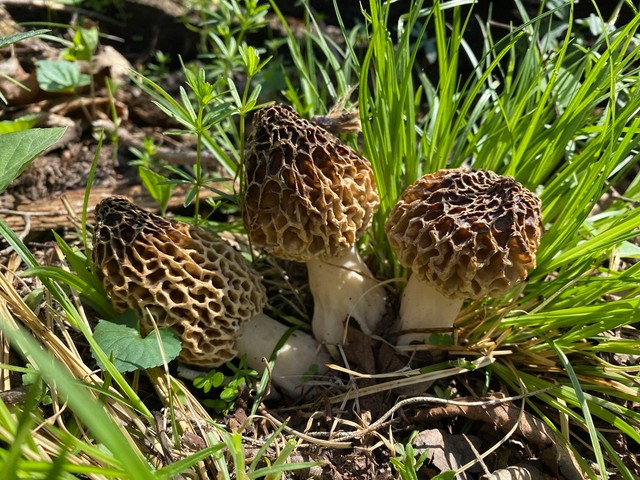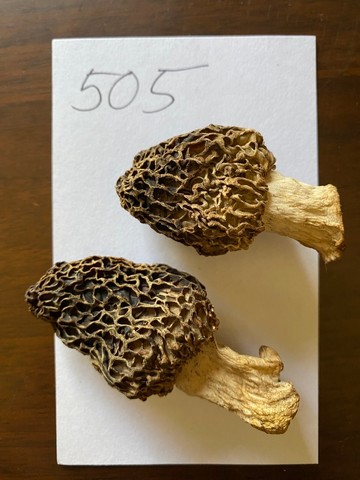Common Morel
Morchella americana
Life > Fungi > Ascomycota > Pezizomycotina > Pezizomycetes > Pezizomycetidae > Pezizales > Morchellaceae > Morchella
Description
Also known as the White Morel.
- Hollow mushroom, with the cap fused to the stem at the cap margin possessing rounded, irregularly arranged pits. 2-4 inches tall at maturity, sometimes much larger.
- Cap shape: rounded, oval, or egg-shaped, cylindrical, or rounded triangular
- Color: Cap gray with white ridges when young, becoming yellow-brown to brown with age. Stem white to light yellow with age.
- Smell: reminiscent of Clorox.
- Usually mycorrhizal (exchanging nutrients with plants), but sometimes fully saprobic (decomposing matter in the soil)
Habitat
Common Morels occur in sites ranging from deep-shaded forest ravines to open Bur Oak hilltop prairies to floodplain Cottonwood forests. It commonly grows near recently dead Elms and Cottonwoods, feeding on the recently deceased roots, but is found near many other tree species. It can be found growing alone or scattered. If one is found, others may be close by within eyesight.
Abundance & Fruiting Period
This spring-time mushroom appears in mid-April through May at Indian Cave. In northern Nebraska, it can still be found in mid-June. It may not appear in dry years.
Indian Cave State Park: Common and abundant. Especially abundant along Trail 9 near the overlook.
Statewide Range: Common throughout Nebraska in wooded habitats. (Distribution Map)
North America: Widespread. (Distribution Map)
Similar Species in Nebraska
- The Half Free Morel (Morchella punctipes) fruits at similar times or soon after the Common Morel, but its cap is attached at the top and only extends halfway down the stem like a skirt if the mushroom is sliced lengthwise.
- The giant morel is a later-fruiting and less common species that grows up to 8 inches tall and is a duller yellow color.
- There are undoubtedly more species of Morels in the state that are less common.
Interesting facts
- The name americana describes the region where it can be found and separates it from the European Yellow Morel (M. esculena).
- Many mushroom hunters distinguish smaller, gray-colored morels as a separate species with the common name "Gray Morel". However, these individuals are Common Morels that are less mature (Kuo 2012).
- This common morel is among our most delicious edible mushrooms and is pursued by many Nebraskans. It can be cooked in numerous ways. People have gotten sick from eating this species undercooked.
- Native Americans used this species as a medical mushroom to treat whooping cough. Today, a compound from the mushroom is used to treat foot odor.
- A morel species in northeastern North America (M. cryptica) can't be distinguished from the Common Morel without DNA testing.
Edibility and Toxicity
Choice edible (Kay, Sikes, & Morse, 2022).
Morels must be thoroughly cooked to be safely eaten! Poisonings from raw or undercooked morels are serious and have led to death (Demorest, 2024).
Observations
May 13th, 2024 Fontenelle Forest
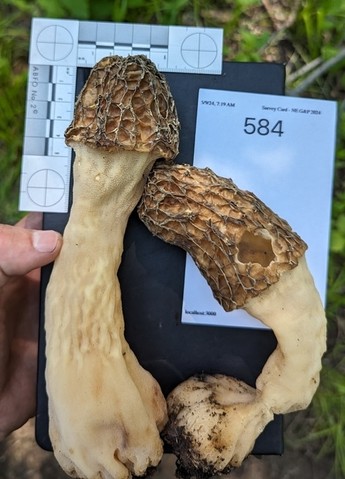
584
- Growing form soil in upland Oak/Hickory woodland.
- Nearby Trees: Kentucky Coffee Tree, Basswood, Northern Red Oak, Bitternut Hickory, and Ash.
April 16th, 2024 Indian Cave State Park
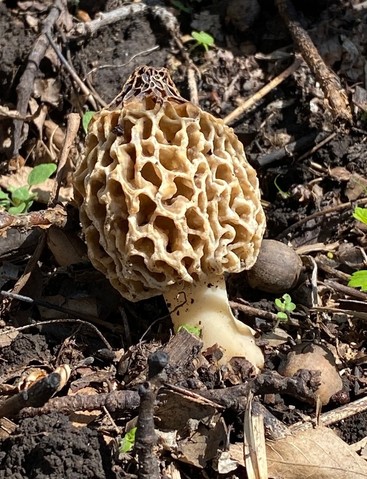
505
- Growing from soil in upland mixed Oak/Hickory woodland.
References
Demorest, H. (2024). Outbreak Linked to Morel Mushroom Exposure — Montana, 2023. MMWR. Morbidity and Mortality Weekly Report, 73. https://doi.org/10.15585/mmwr.mm7310a1
Kay, S., Sikes, B., & Morse, C. (2022). A New Guide to Kansas Mushrooms. University Press of Kansas.
Kuo, M. (2012, November). Morchella esculentoides. Retrieved from the MushroomExpert.Com Web site: http://www.mushroomexpert.com/morchella_esculentoides.html.
Kuo, M., Dewsbury, D. R., O’Donnell, K., Carter, M. C., Rehner, S. A., Moore, J. D., … Volk, T. J. (2012). Taxonomic revision of true morels (Morchella) in Canada and the United States. Mycologia, 104(5), 1159–1177. https://doi.org/10.3852/11-375
Richard, F., Bellanger, J. M., Clowez, P., Hansen, K., O’Donnell, K., Urban, A., … Moreau, P. A. (2015). True morels (Morchella, Pezizales) of Europe and North America: evolutionary relationships inferred from multilocus data and a unified taxonomy. Mycologia, 107(2), 359–382. https://doi.org/10.3852/14-166
Created December 15, 2025 at 10:41 AM
